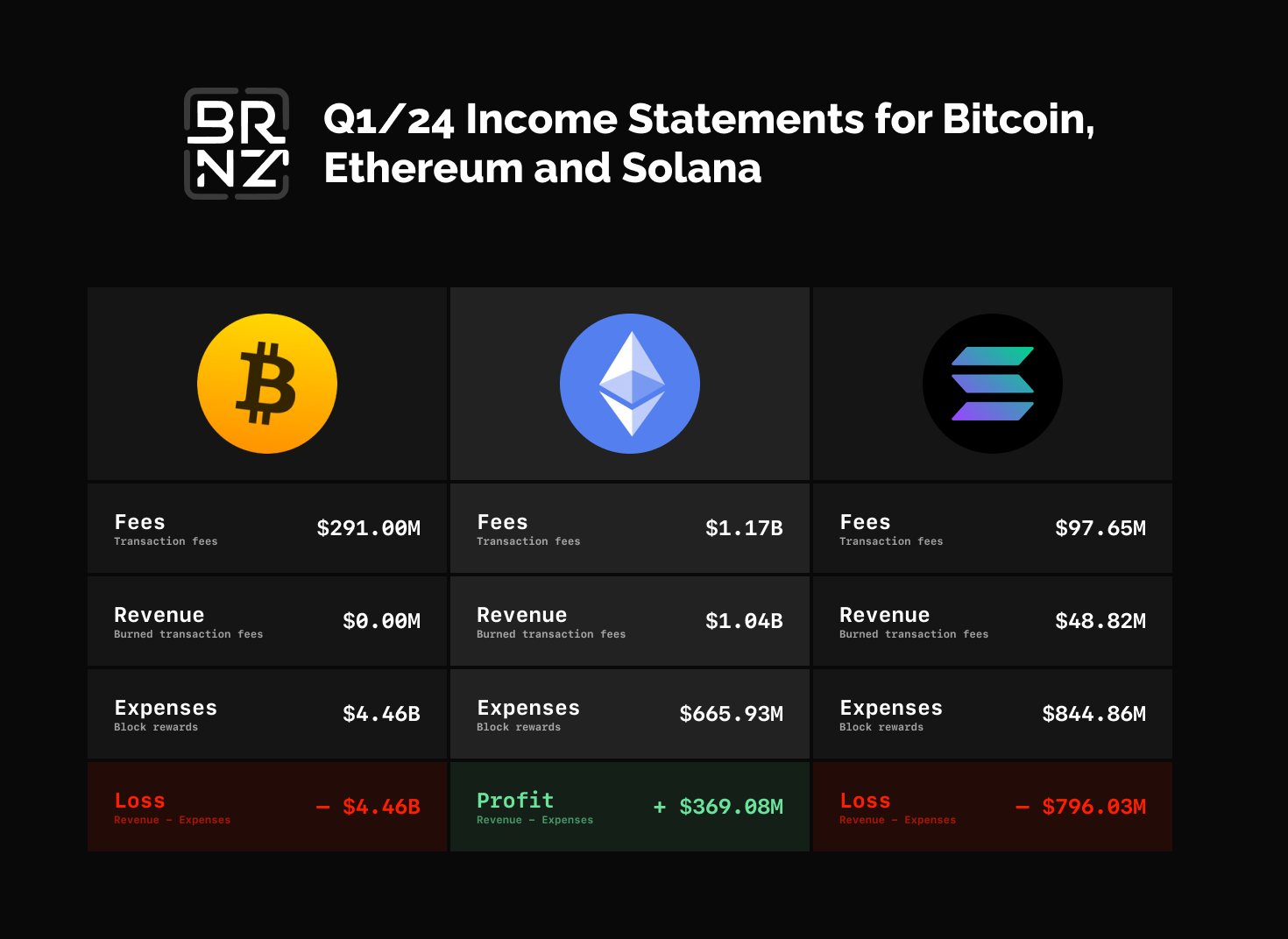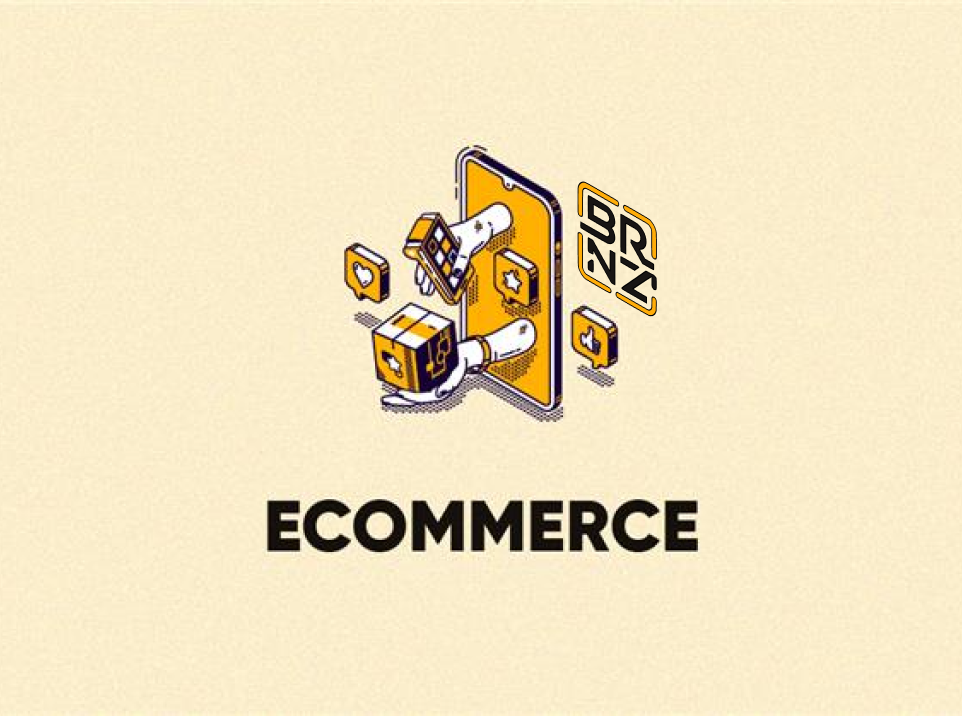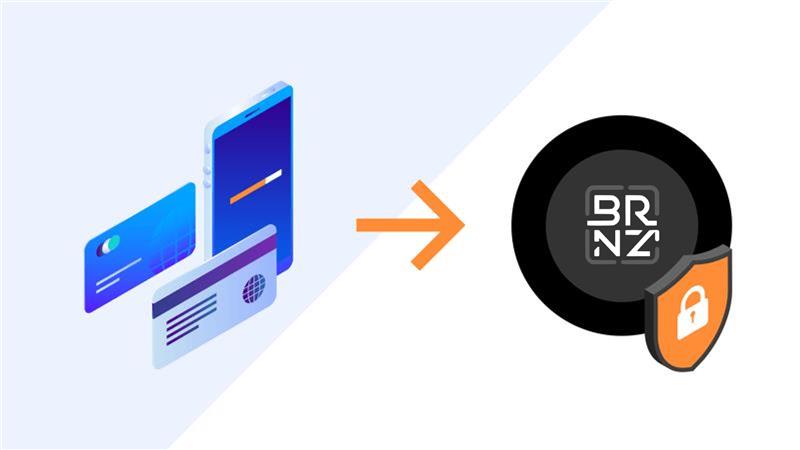𝗪𝗲 𝘀𝗵𝗼𝘂𝗹𝗱 𝘀𝘁𝗼𝗽 𝗷𝘂𝗱𝗴𝗶𝗻𝗴 𝗯𝗹𝗼𝗰𝗸𝗰𝗵𝗮𝗶𝗻𝘀 𝗼𝗻𝗹𝘆 𝗯𝘆 𝘁𝗵𝗲𝗶𝗿 𝗺𝗮𝗿𝗸𝗲𝘁 𝗰𝗮𝗽.
Instead, we should also look at their profit & loss statement.
That’s because P&L is the right metric indicating the maturity of the chain.
And how far it is from breaking even and achieving long-term sustainability.
Here’s how the top 3 chains are faring so far:
➡️ 𝙀𝙏𝙃𝙀𝙍𝙀𝙐𝙈 𝙞𝙨 𝙩𝙝𝙚 𝙤𝙣𝙡𝙮 𝙢𝙖𝙟𝙤𝙧 𝙘𝙝𝙖𝙞𝙣 𝙩𝙝𝙖𝙩’𝙨 𝙥𝙧𝙤𝙛𝙞𝙩𝙖𝙗𝙡𝙚.
It has reached a certain stage of maturity and became deflationary in Nov 2022, after the Merge upgrade.
This means that:
Burned ETH transaction fees > ETH block rewards
Resulting in a profit of $369m with a 27% profit margin in Q1 2024.
Not bad at all.
And it’s not surprising given that Ethereum has the largest and most mature ecosystem of L2s, DeFi protocols, NFTs, dApps, etc.
➡️ 𝘽𝙄𝙏𝘾𝙊𝙄𝙉, 𝙩𝙝𝙚 𝙗𝙞𝙜 𝙊𝙂, 𝙞𝙨 𝙨𝙩𝙞𝙡𝙡 𝙩𝙚𝙘𝙝𝙣𝙞𝙘𝙖𝙡𝙡𝙮 𝙞𝙣 𝙩𝙝𝙚 𝙧𝙚𝙙.
It’s primarily compensating its miners by issuing new Bitcoin and inflating the existing supply.
However, there’s a hard cap on the total supply.
And the block reward is being reduced every 4 years, with the last Bitcoin halving happening 10 days ago.
So how can the Bitcoin network remain secure if block rewards will gradually decrease in the future?
The primary bet is on building a thriving Bitcoin DeFi, NFT and meme coins ecosystem in the future.
This can dramatically increase transaction fees and compensate for shrinking block rewards.
Ordinals (Bitcoin NFTs) and Runes (Bitcoin fungible tokens) protocols have already started this trend and contributed to a huge increase in fees.
Bitcoin DeFi is also booming, so the future here looks bright.
So while still in red, Bitcoin seems to have a solid future.
➡️ 𝙎𝙊𝙇𝘼𝙉𝘼 𝙞𝙨 𝙖𝙣𝙤𝙩𝙝𝙚𝙧 𝙡𝙤𝙨𝙨-𝙢𝙖𝙠𝙞𝙣𝙜 𝙘𝙝𝙖𝙞𝙣.
But it’s also the youngest one (beta mainnet Mar 2020), so it’s still early in its journey to achieving maturity.
While it’s burning around half of the fees that it is generating, it’s by far not enough to compensate for the block rewards given to validators.
At the current rate, its fees burned would need to increase around 18x for the chain to become profitable.
Meanwhile, the primary incentive for validators to secure the chain is the block rewards, which inflate the total SOL token supply.
Also, like Ethereum and unlike Bitcoin, Solana doesn’t have a hard cap on the total token supply.
So its roadmap to profitability lies in fostering and growing the Solana ecosystem of protocols, dApps, NFTs, etc.
With the expectation that in the long run it will start generating and burning more fees as it matures.
And ultimately go deflationary, like ETH.



